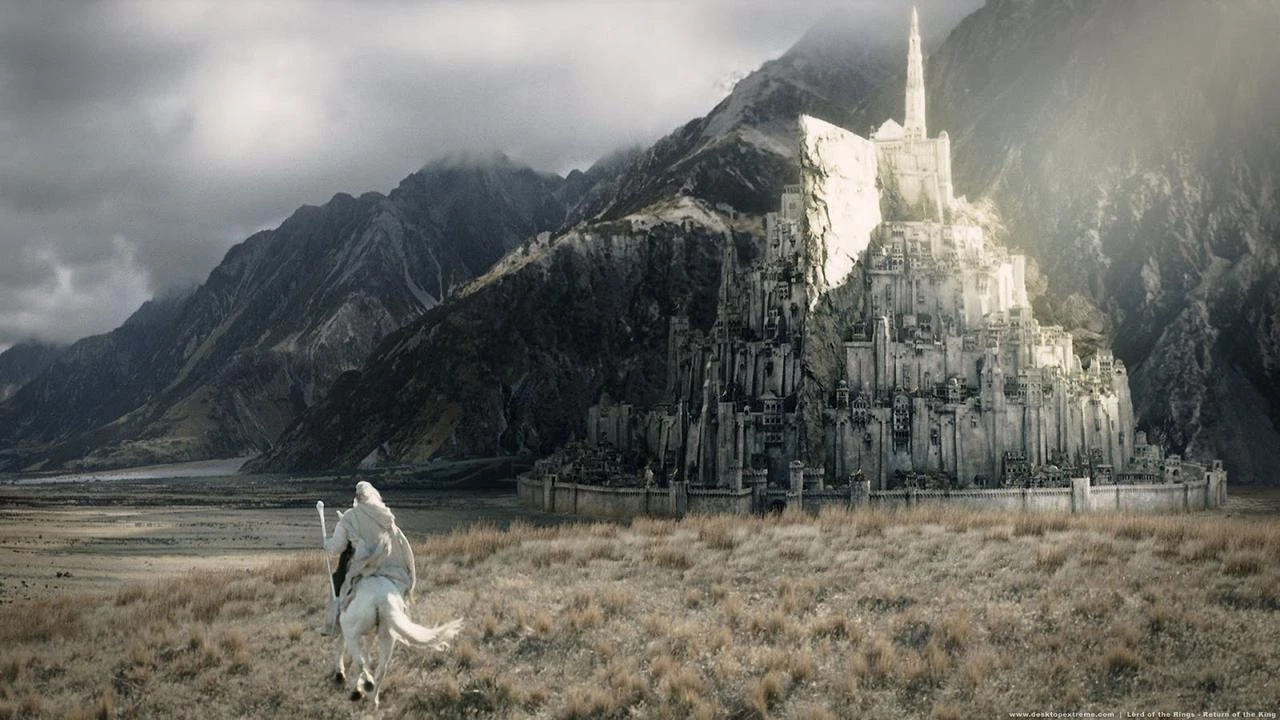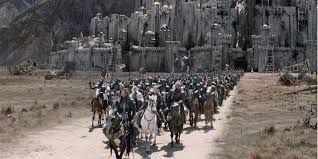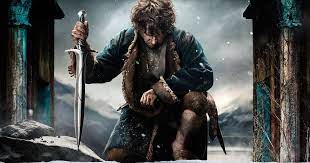The Lord of the Rings: The Return of the King (2003)

Review of The Lord of the Rings: The Return of the King (2003)
The Lord of the Rings: The Return of the King (2003), directed by Peter Jackson, serves as a grand and emotionally charged conclusion to one of cinema’s most celebrated trilogies. Adapted from J.R.R. Tolkien’s epic saga, the film elevates the stakes, deepens the characters, and delivers a finale that is both triumphant and bittersweet. With its masterful storytelling, groundbreaking visuals, and emotional depth, The Return of the King solidifies its place as a monumental achievement in filmmaking.
A Powerful Conclusion to an Epic Saga
The narrative picks up where The Two Towers left off, with Frodo Baggins (Elijah Wood) and Samwise Gamgee (Sean Astin) continuing their arduous journey to Mount Doom to destroy the One Ring. Accompanied by the treacherous and pitiable Gollum (Andy Serkis), they face escalating challenges as the ring’s corrupting influence grows stronger. Meanwhile, Aragorn (Viggo Mortensen), Legolas (Orlando Bloom), Gimli (John Rhys-Davies), and Gandalf (Ian McKellen) rally the forces of Middle-earth to stand against Sauron’s army, culminating in the climactic Battle of the Pelennor Fields and the siege of Minas Tirith.
The film’s structure masterfully weaves these parallel storylines, maintaining a relentless pace while allowing moments of introspection and character development. As the final chapter, it delivers on the promises of the preceding films, resolving key arcs with emotional resonance and narrative satisfaction.
Monumental Battles and Visual Splendor
One of the most celebrated aspects of The Return of the King is its awe-inspiring battle sequences. The Battle of the Pelennor Fields is a breathtaking spectacle of cinematic warfare, featuring massive armies, intricate choreography, and seamless integration of practical effects and CGI. The arrival of the Rohirrim, led by Éomer (Karl Urban) and Théoden (Bernard Hill), is a moment of pure cinematic grandeur, underscored by Howard Shore’s rousing musical score.
The siege of Minas Tirith is another highlight, showcasing the ingenuity of Weta Digital’s visual effects team. From the terrifying might of the massive Oliphaunts to the eerie presence of the Witch-king and his fell beast, the sequence immerses viewers in the chaos and heroism of battle. Despite the scale of these scenes, Jackson ensures that the focus remains on the characters, grounding the spectacle in personal stakes and emotional depth.
Character Arcs That Shine
The Return of the King excels in its portrayal of character growth and resolution. Aragorn’s journey reaches its zenith as he embraces his destiny as the King of Gondor. Viggo Mortensen’s performance captures Aragorn’s quiet strength, humility, and eventual acceptance of his role as a leader. His coronation is a powerful moment, symbolizing the restoration of hope and unity to Middle-earth.
Frodo and Sam’s relationship is the emotional heart of the film. Sean Astin’s portrayal of Sam is particularly noteworthy, embodying loyalty, resilience, and unwavering friendship. The dynamic between Frodo, Sam, and Gollum reaches a boiling point as betrayal and trust collide in the treacherous landscape of Mount Doom. Andy Serkis’s motion-capture performance as Gollum is nothing short of revolutionary, adding layers of complexity to a character torn between malice and desperation.
Other characters also have their moments of glory. Éowyn (Miranda Otto) defies expectations and delivers one of the film’s most iconic moments by defeating the Witch-king, uttering the unforgettable line, “I am no man.” Théoden’s noble sacrifice and Gandalf’s unwavering guidance further enrich the narrative tapestry.
Themes of Sacrifice and Redemption
At its core, The Return of the King is a story about sacrifice, redemption, and the enduring power of hope. The film emphasizes the cost of heroism, as characters face physical and emotional trials to protect their world. Frodo’s struggle with the ring’s influence serves as a poignant exploration of the burden of power and the resilience required to overcome it. Sam’s declaration, “I can’t carry it for you, but I can carry you,” encapsulates the film’s message of solidarity and selflessness.
The theme of redemption is also central to the narrative. Aragorn’s rise to kingship, Gollum’s tragic fate, and Boromir’s posthumous honor exemplify the complexities of human nature and the possibility of redemption, even in the face of past mistakes.
Emotional Resonance and Bittersweet Farewells
The film’s emotional resonance is heightened by its bittersweet conclusion. The destruction of the One Ring marks the end of Sauron’s reign of terror but comes at great personal cost to Frodo, who is forever changed by his journey. The return to the Shire, once a symbol of innocence and peace, is tinged with melancholy as Frodo realizes he can no longer find solace there. His departure to the Grey Havens, accompanied by Gandalf, Bilbo, and the Elves, is a poignant farewell that underscores the sacrifices made to secure Middle-earth’s future.
The film’s multiple endings, while occasionally critiqued for their length, are necessary to provide closure to the sprawling narrative. Each character’s journey is given the attention it deserves, allowing audiences to bid farewell to the beloved inhabitants of Middle-earth.
Technical and Artistic Mastery
Peter Jackson’s direction is nothing short of visionary. His ability to balance large-scale action with intimate character moments ensures that every scene serves the story. The screenplay by Jackson, Fran Walsh, and Philippa Boyens condenses Tolkien’s dense prose into a cohesive and emotionally impactful script.
Howard Shore’s musical score is integral to the film’s success, blending haunting choral arrangements with triumphant orchestral themes. The use of leitmotifs for different characters and cultures enriches the storytelling, with pieces like “The Lighting of the Beacons” and “Into the West” leaving a lasting impression.
The production design, costumes, and makeup are equally impressive, bringing Middle-earth to life with unparalleled authenticity. The attention to detail in the design of Minas Tirith, the Dead Marshes, and the fiery depths of Mount Doom showcases the dedication of the entire creative team.
Legacy and Accolades
The Return of the King was a critical and commercial triumph, earning over $1 billion at the global box office and sweeping the 76th Academy Awards with 11 Oscars, including Best Picture, Best Director, and Best Adapted Screenplay. It remains the only fantasy film to win the coveted Best Picture award, a testament to its cultural and artistic significance.
The film’s impact extends beyond its awards and box office success. It has inspired countless filmmakers, writers, and artists, cementing its status as a cornerstone of modern fantasy. Its themes of courage, friendship, and perseverance continue to resonate with audiences worldwide.
Conclusion
The Lord of the Rings: The Return of the King is a cinematic masterpiece that concludes the trilogy with unmatched grandeur and emotional depth. Its compelling characters, epic battles, and timeless themes make it a film that transcends the fantasy genre, appealing to viewers of all backgrounds. As both a celebration of Tolkien’s legacy and a testament to the power of storytelling, The Return of the King remains a landmark achievement in the history of cinema. Whether you are a devoted fan or a newcomer to Middle-earth, this film is an unforgettable experience that will linger in your heart long after the credits roll.